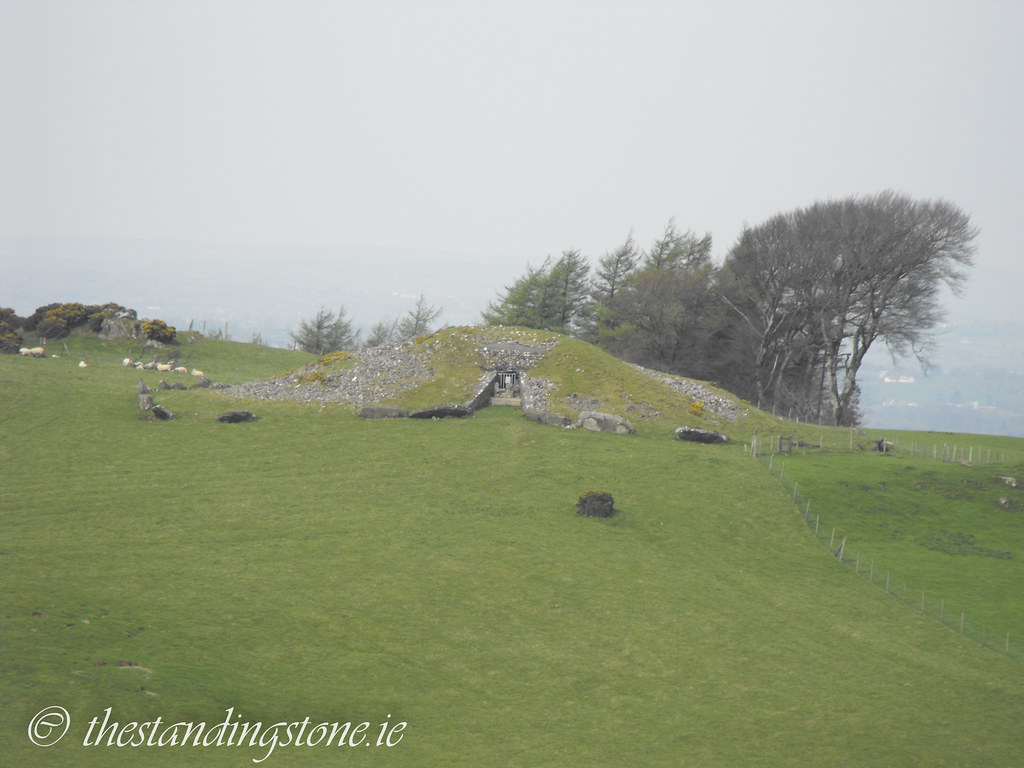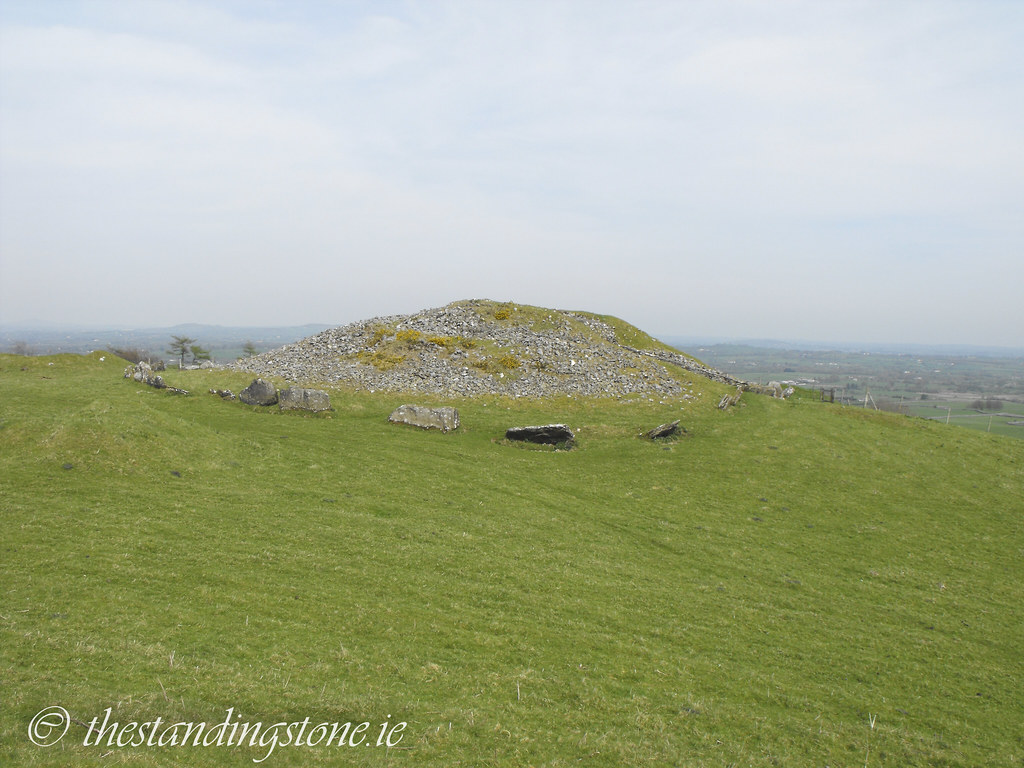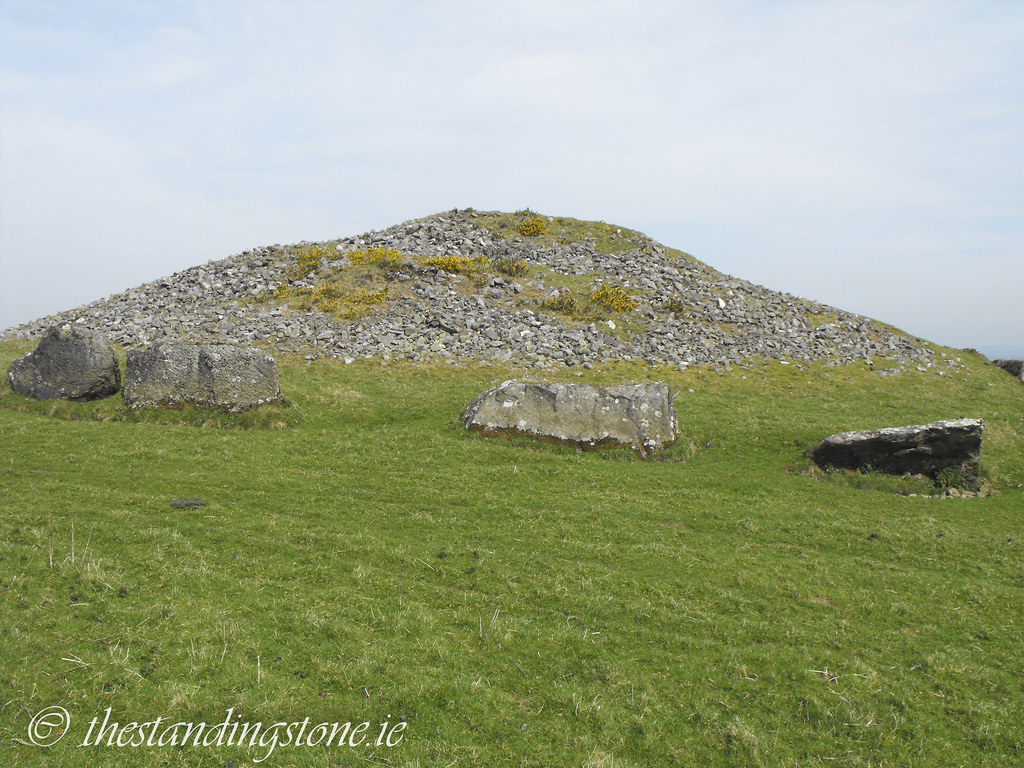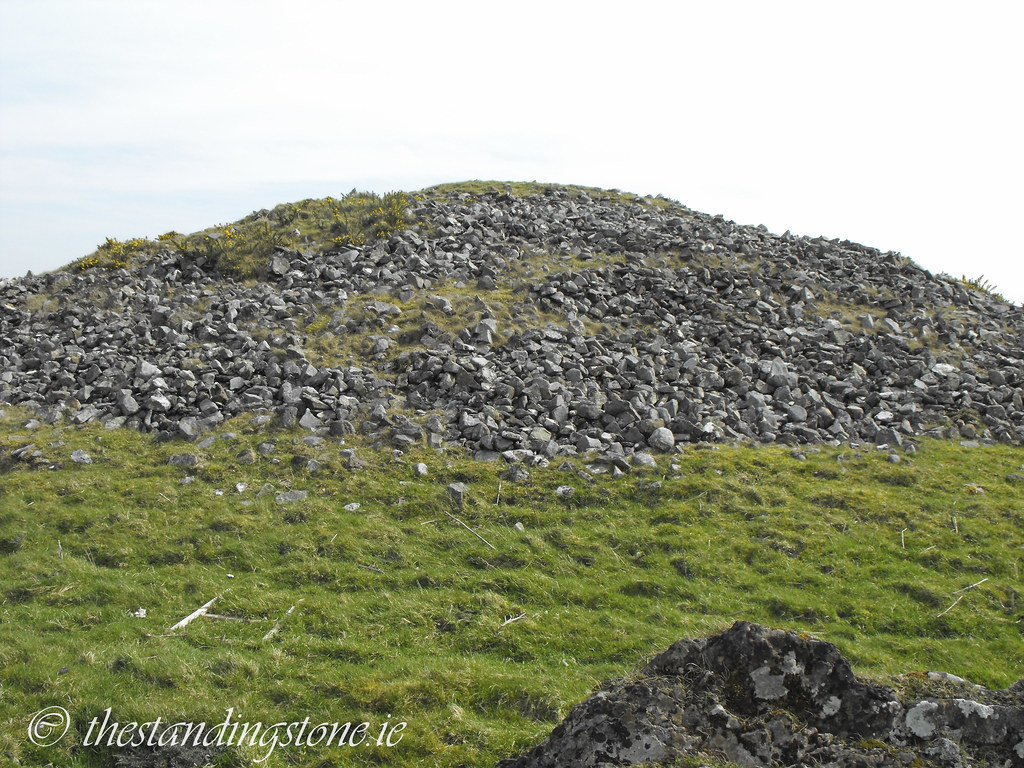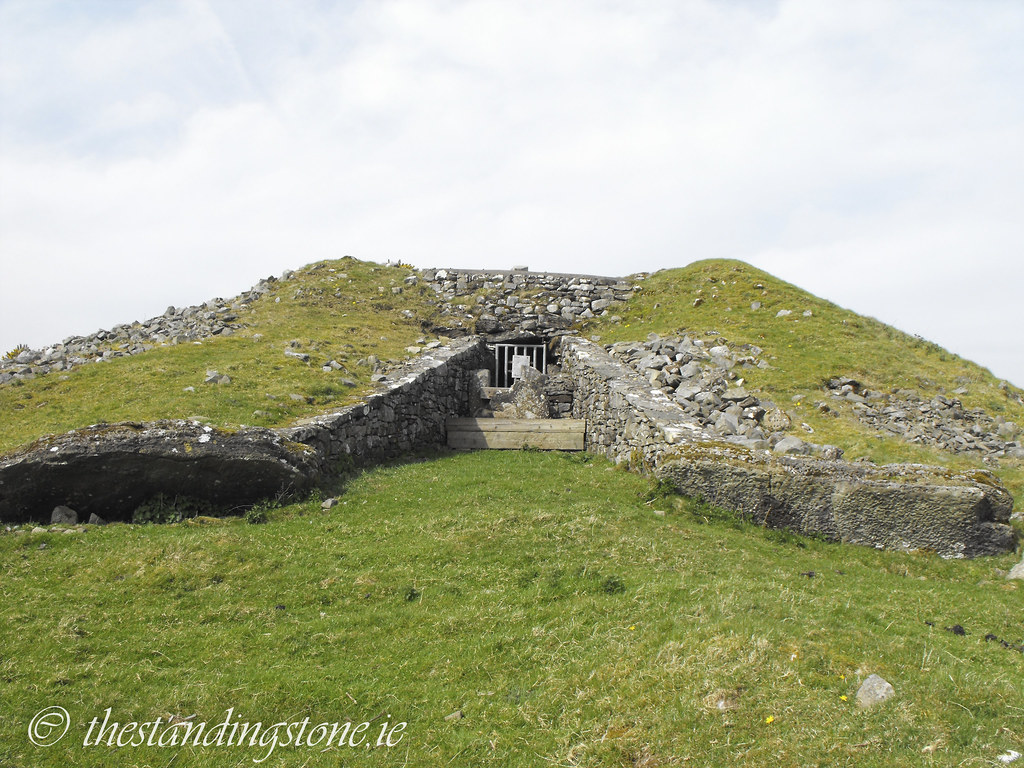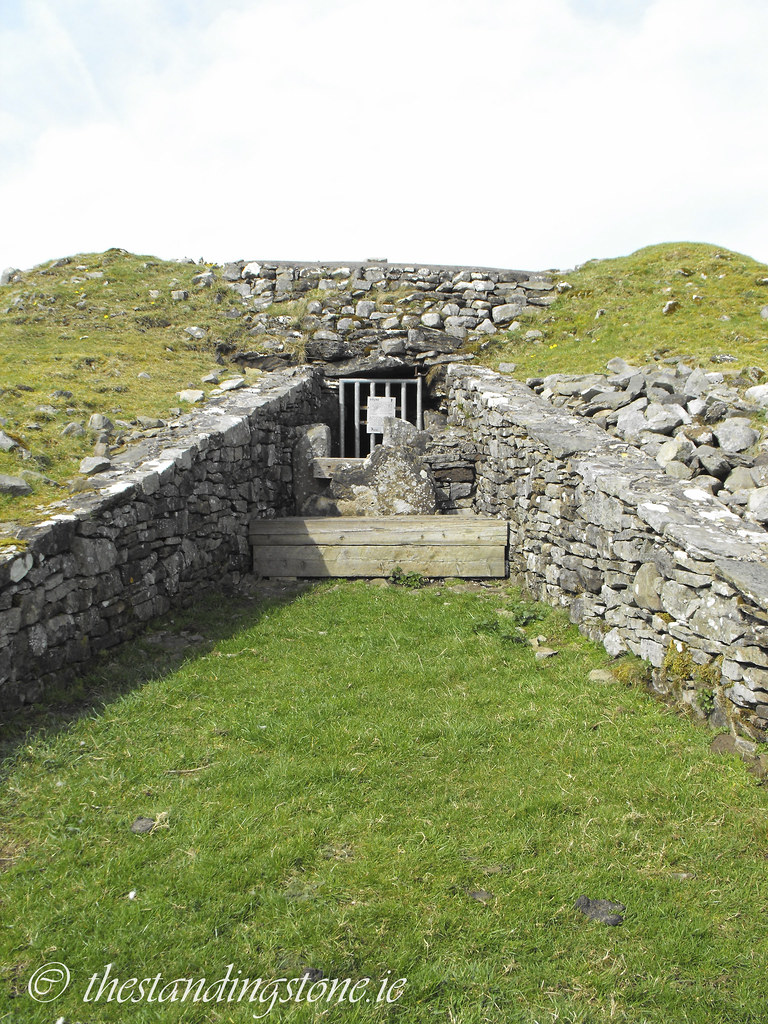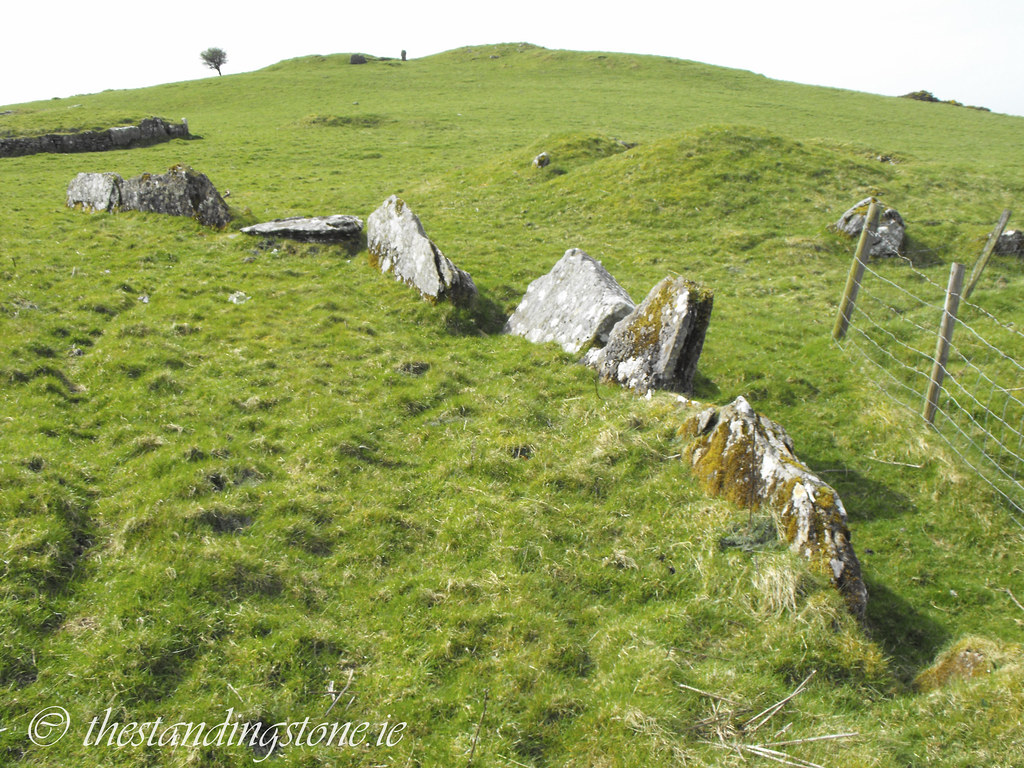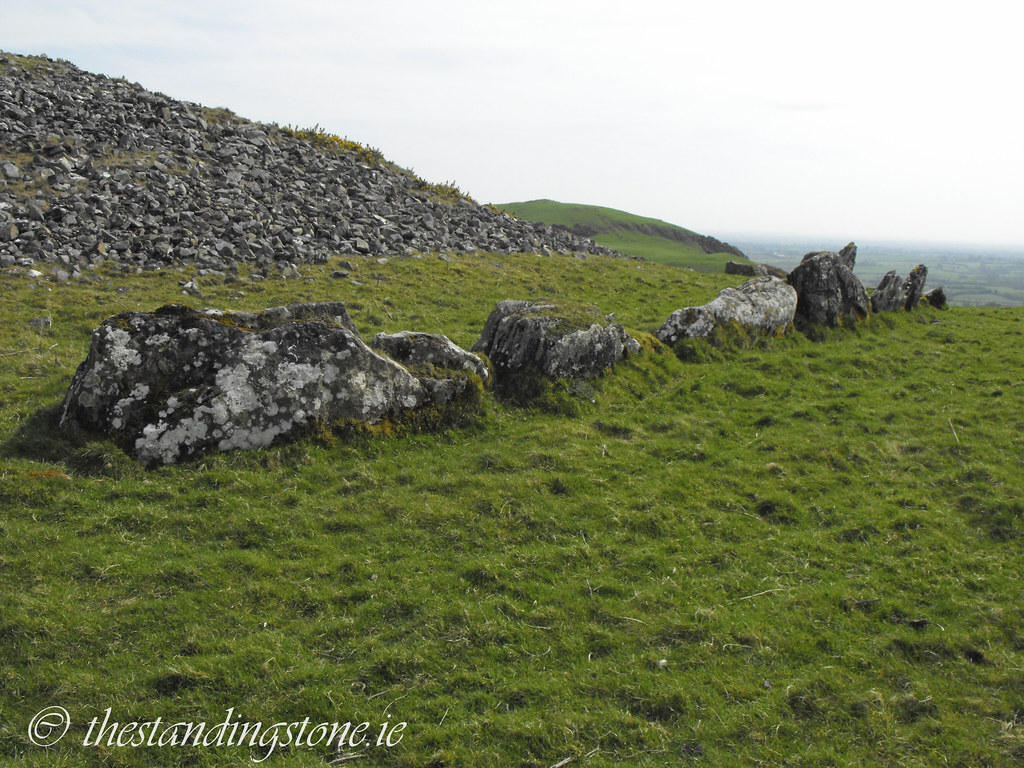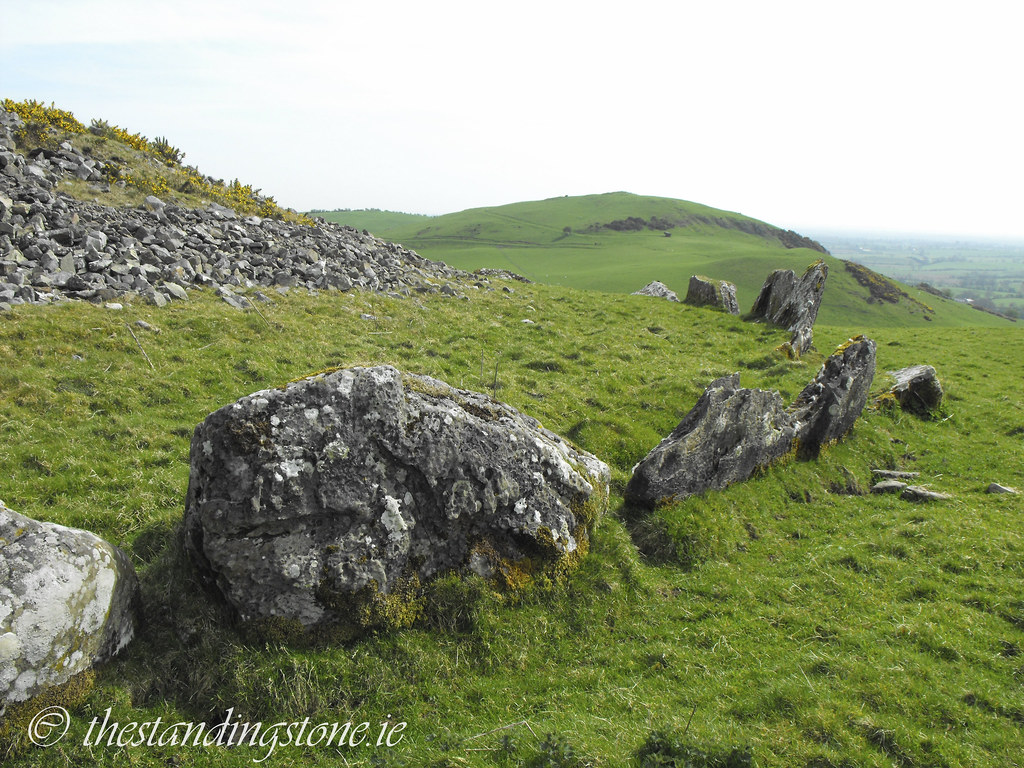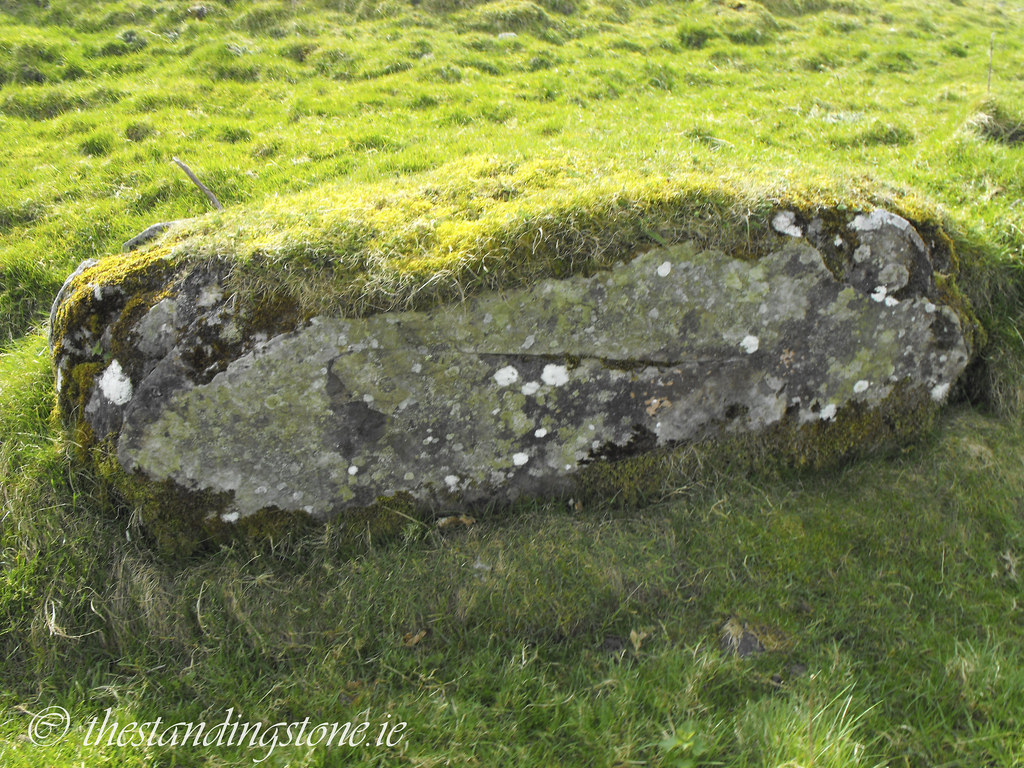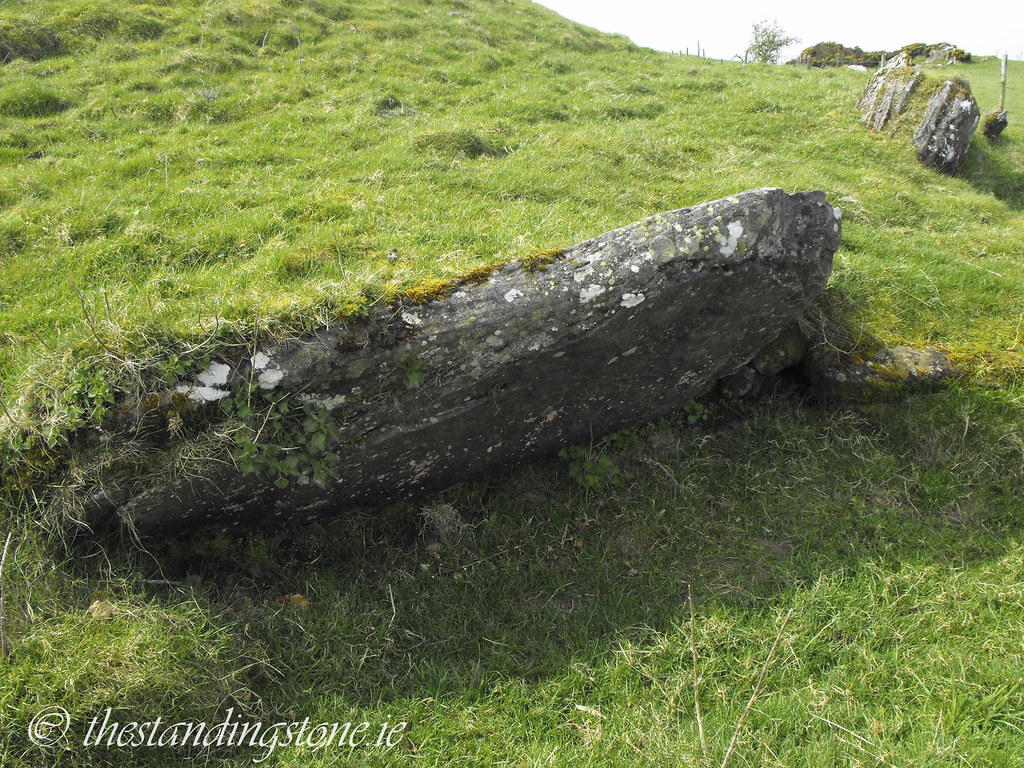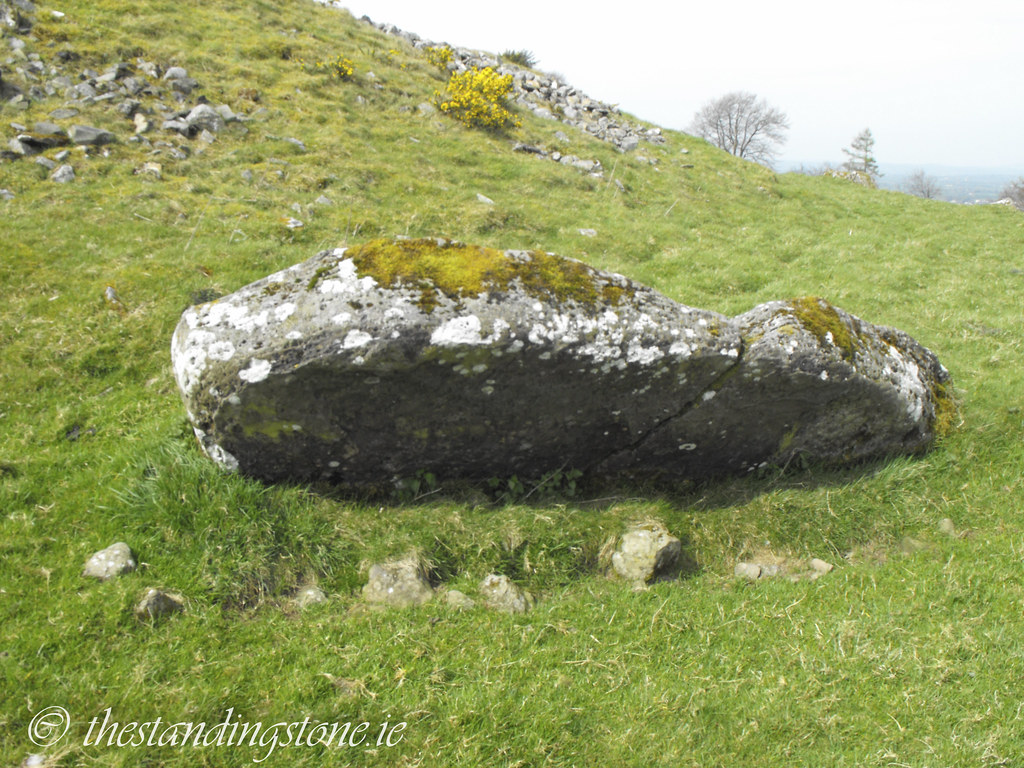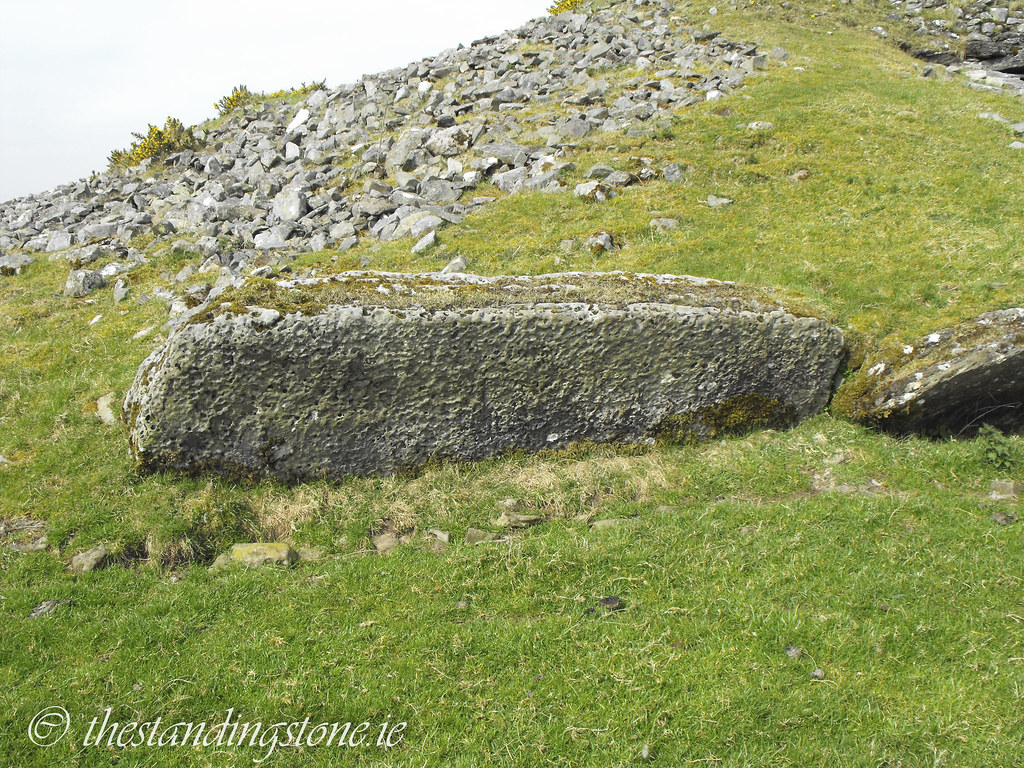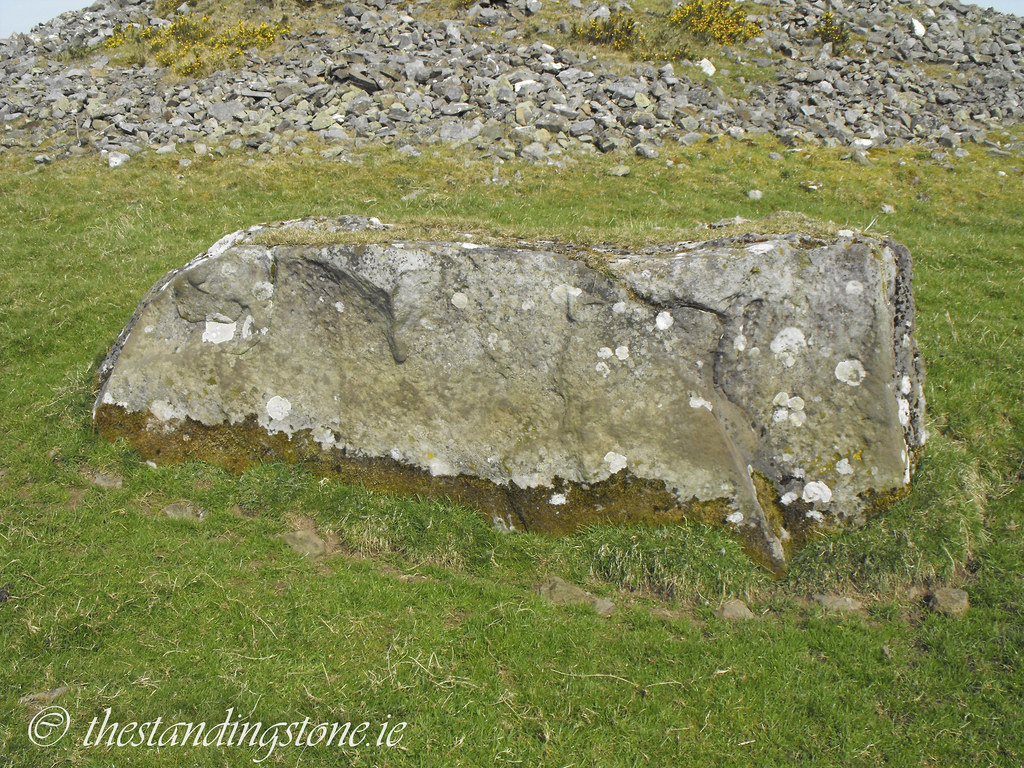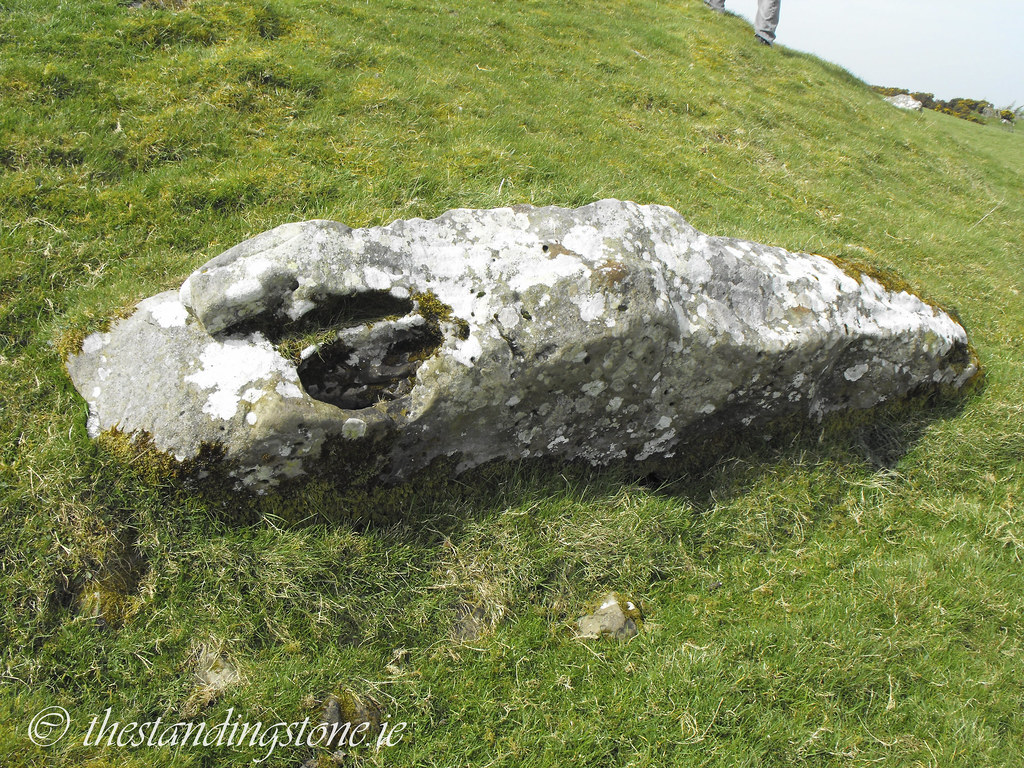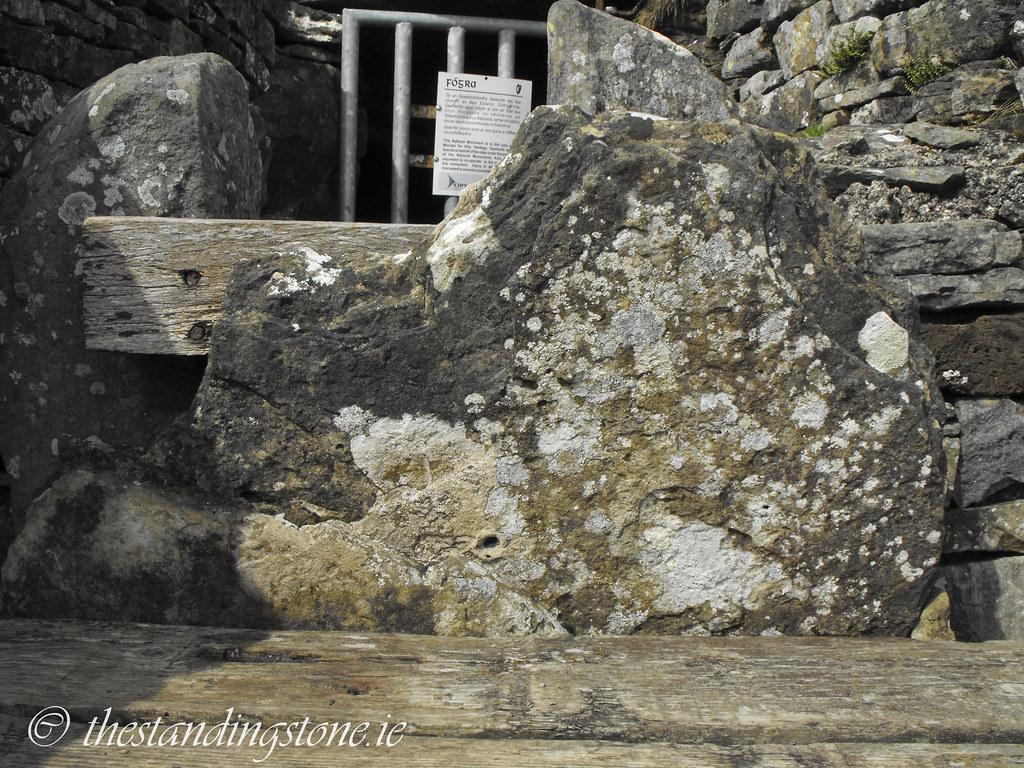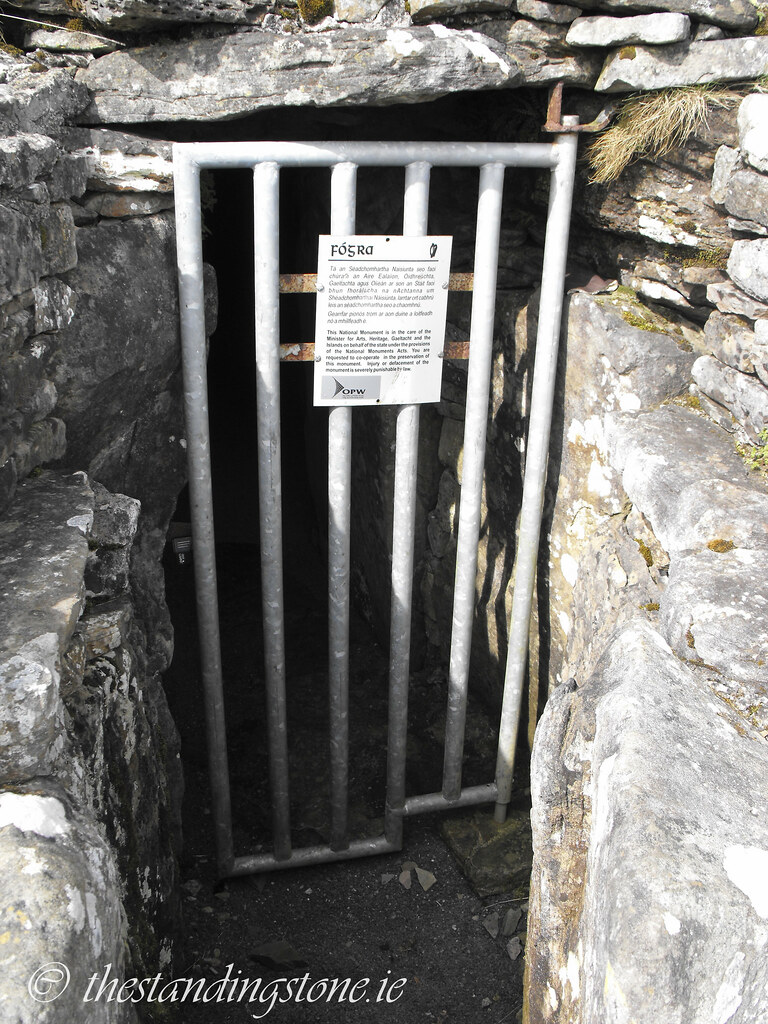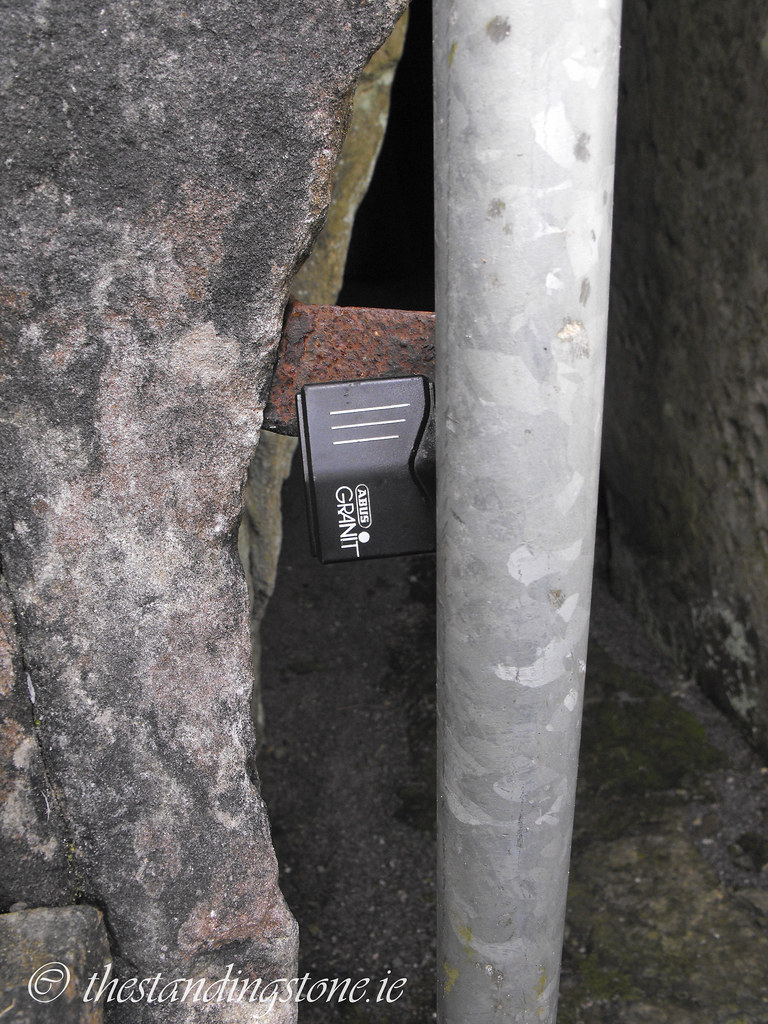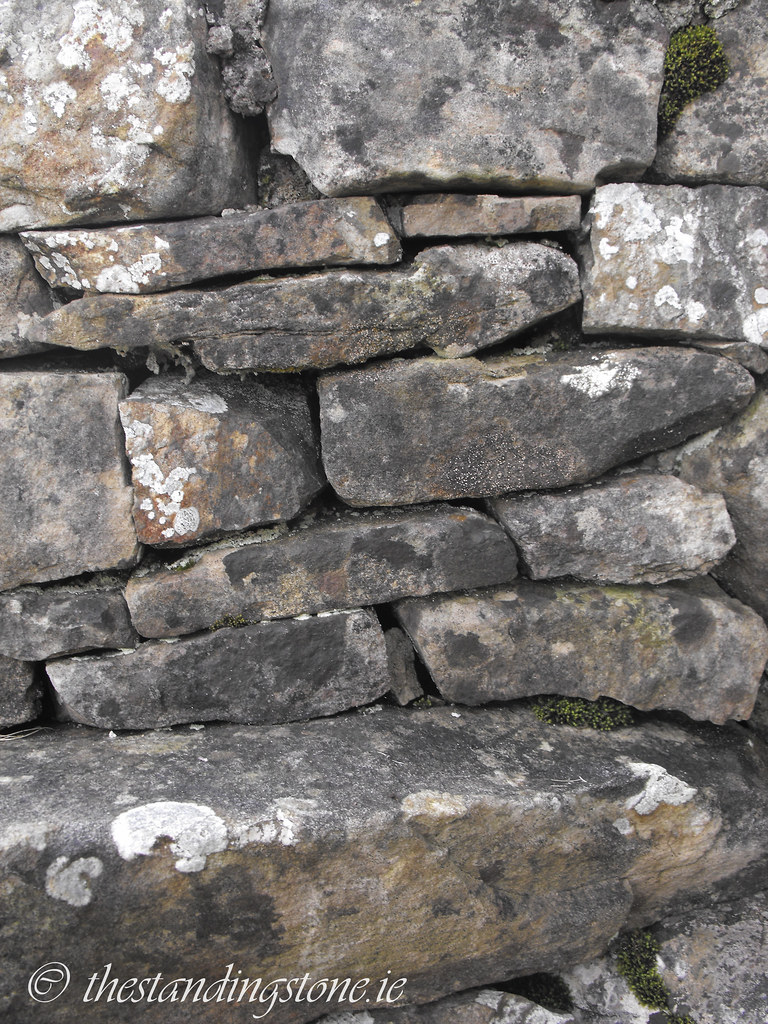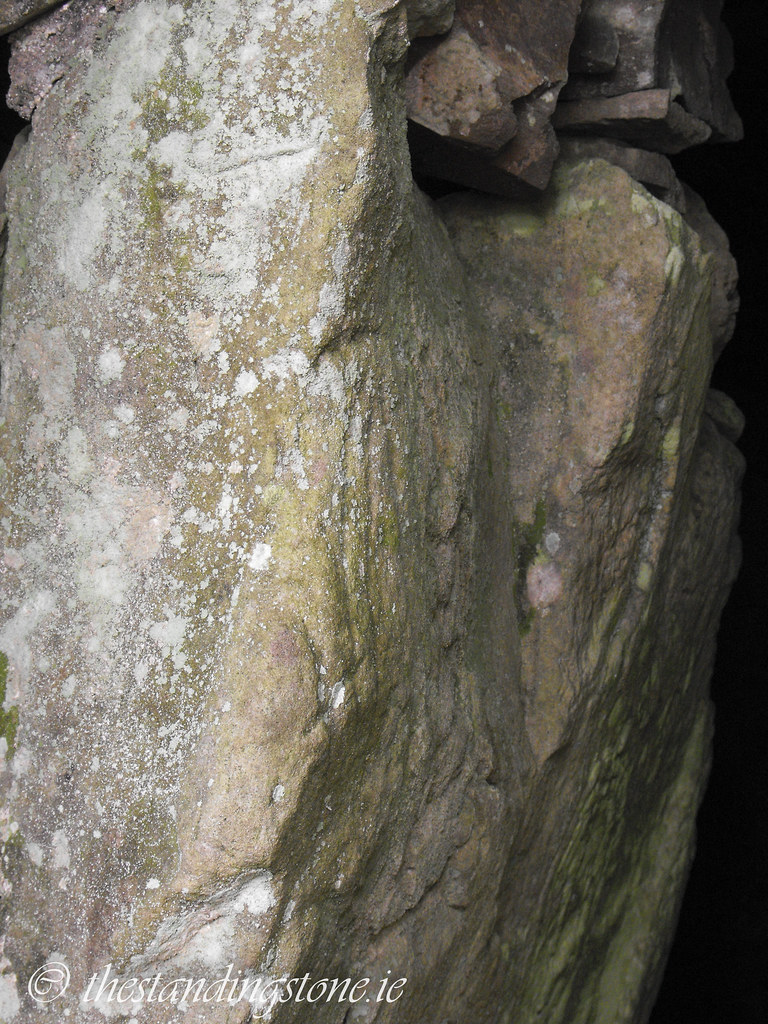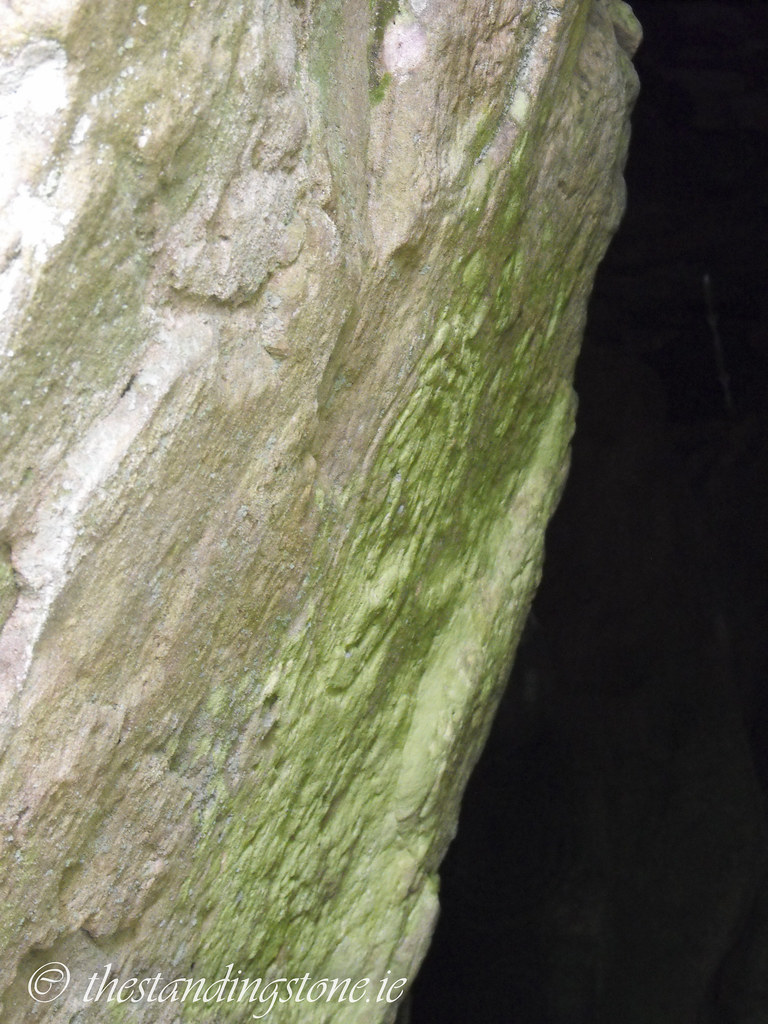Location – Cairn L is the second largest tomb on Carnbane West and visible from quite a distance.
OS: N 571 774 (map 42)
GPS: N 57130 77425 (Accuracy – 1m)
Longitude: 7° 8' 2.46" W
Latitude: 53° 44' 35.9" N
See map at the bottom of the page.
Description and History – This tomb, along with cairn T, is probably the best preserved and most spectacular tomb at the entire complex. Unfortunately, there is a dispute with the owner of the land and the tomb remains closed to the public. You can only look through the gates and see some of the decoration near the entrance. There are 7 chambers and most of them are not entirely visible from the entrance. I do remain hopeful that I will get inside the tomb one day. It is 133m in circumference and 40m in diameter. Forty-one kerbstones remain and they flatten towards the entrance. None are decorated. Most of the stone from the cairn is now missing and it must have been huge as it is large now and doesn’t come close to touching the kerb. The entrance and half of the length to the chamber has been reconstructed. Chalk balls were found which fit into carved depressions on some of the orthostats. There would have originally been a corbelled roof similar to that found in other passage graves and it possibly rose to a height of 5m. Today, however, there is a concrete dome which was probably put in at the same time the entrance was restored in the 1940s and 1960s. Inside are seven chambers. More chalk balls were found at the site as well as two polished stone balls which are now housed in National Museum. There are 18 carved stones inside the seven chambers and a limestone pillar in front of the main chamber at the rear of the tomb. I’m not going to discuss the elaborate artwork inside the tomb as I didn’t see enough to describe it first-hand. I hope to one day see it for myself and post more pictures here.
Because of the damage to and remodelling of the entrance there is some debate at to the solar alignment at the site. The sun appears to enter the chamber during Samhain (November) and Imbolc (February) and hits the standing stone. It has been speculated that the cairn was built around the already present quartz pillar, known as the Whispering Stone.
Difficulty – Easy to spot, but the tomb remains closed to the public and has a padlocked gate on it.
The cairn is a lot smaller today that it originally would have been.
There are some massive kerb stones to the sides of the entrance.
As can be seen, the cairn doesn't reach the kerb any more.
There are a number of fallen or partially fallen kerbs stones.
It's hard to see what's going on here as there's plenty of wood buttressing the structure in places.
This is what presents you at the entrance.
A portion of reconstructed wall.
Some decoration can be seen here.
These are the pits into which the chalk ball found would have fit.
This is the least blurry picture I could get of the quartz pillar.
View The Standing Stone in a larger map

